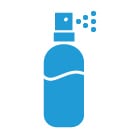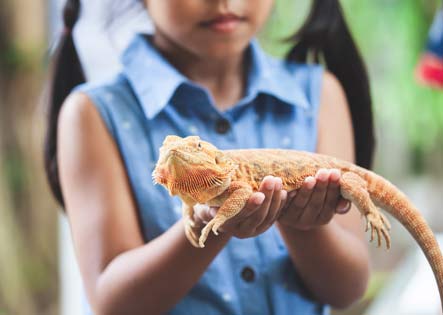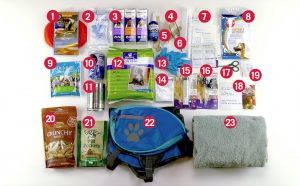
When we bring a new pet home, one of the first things we try to do is “pet proof” our homes. We make sure that our fences are up and all choking hazards and chemicals are safely stored away.
But what about those times when even our most diligent precautions are trumped by our pet’s mischief? For times like these, it’s important to have a few essential items on hand to help care for your pet’s health.
What to Put in Your Pet First Aid Kit:
Keep a pack full of these essentials on hand or in your trunk to help prepare for any number of scrapes, wounds or health issues. Depending on your lifestyle, there may be additional items you can add to prepare for specific climates or environments, like booties for extreme weather.

1. A Clean Towel
Towels can be used in a number of ways – from keeping your pet dry, to acting as a sling or to provide as a wrap to help calm and secure your pet.

2. Gauze or Bandages
Use these to cover and protect open wounds, or to soak in water and help gently clean out cuts and scrapes.

3. Muzzle
For dogs primarily, it’s important to keep a muzzle around for your own safety, because pets in pain can be grouchy or even aggressive.

4. Disposable Gloves
You never know what substances your pet could be exposed to (or roll in) during an outdoor adventure, so keep some sterile gloves on hand to help you stay clean and safe and to prevent contaminating any wounds you treat.

5. A Wound Care Solution
A properly formulated pet wound care solution will come in handing for cleaning cuts, abrasions, and scrapes, and will jumpstart the healing process.

6. Tweezers
These will be one of the most versatile tools in your pack. Use them to clean debris from wounds or remove splinters, ticks, and burrs.

7. Scissors/Knife
Whether you need to cut gauze or cut away something that your pet managed to get stuck in, it’s important to keep a sharp tool on hand for emergencies. Make sure to always store these properly with blades closed and tucked away so no one accidentally gets hurt.

8. Medical Tape
If your pet gets a scrape or wound out in the woods, medical tape will help to keep a dressing in place and prevent their wound from getting contaminated any further on your trip home.

9. Emergency Numbers
One of the most important things you can keep in your kit, or programmed into your phone, are the numbers to your vet, an emergency veterinary hospital, and poison control. These numbers could be what saves your pets life in a dire emerge

10. A Water Bottle
Dehydration can happen in any weather but is especially dangerous in the warmer months. Keep a water bottle in your trunk in case of an emergency. It can also be used to rinse down your pet or clear out a wound.
Don’t Forget Species or Breed-Specific Items:
The basic items listed above are a great place to start when building your pet first aid kit, but don’t forget items unique to your pet. For instance, different breeds may have different requirements, and different species definitely will.
Whether you take your pet out for adventures or are strictly indoor buddies, it’s important to be prepared for anything. Always follow up with your vet after your pet has had an injury and always seek medical attention if an injury is too severe for your first aid kit.

 Dr. Melinda J. Mayfield-Davis, DVM, WCHP-AH, brings over 20 years of experience in veterinary medicine. She is the Technical Services Veterinarian with Innovacyn, Inc., parent company of Vetericyn Animal Wellness. She received her DVM from Oklahoma State University and now resides in Southeast Kansas with her husband, two children, four dogs, and six horses. Prior to working with Innovacyn, Dr. Mayfield owned and operated the Animal Care Center in Columbus, KS.
Dr. Melinda J. Mayfield-Davis, DVM, WCHP-AH, brings over 20 years of experience in veterinary medicine. She is the Technical Services Veterinarian with Innovacyn, Inc., parent company of Vetericyn Animal Wellness. She received her DVM from Oklahoma State University and now resides in Southeast Kansas with her husband, two children, four dogs, and six horses. Prior to working with Innovacyn, Dr. Mayfield owned and operated the Animal Care Center in Columbus, KS.


